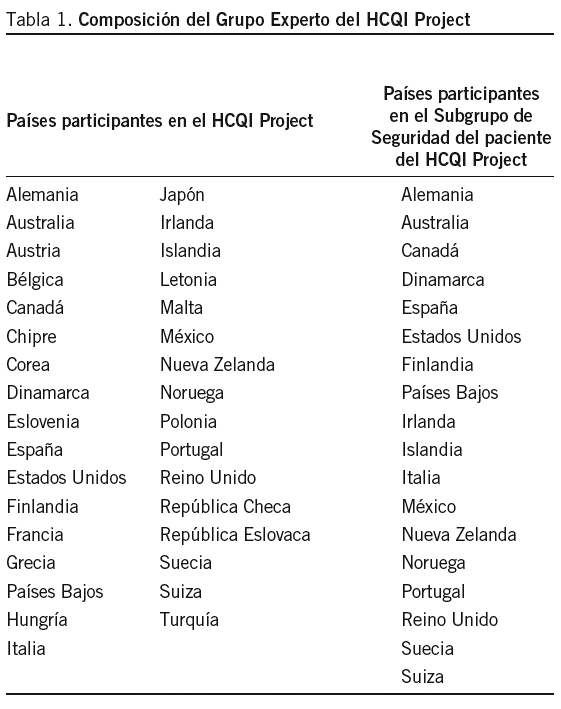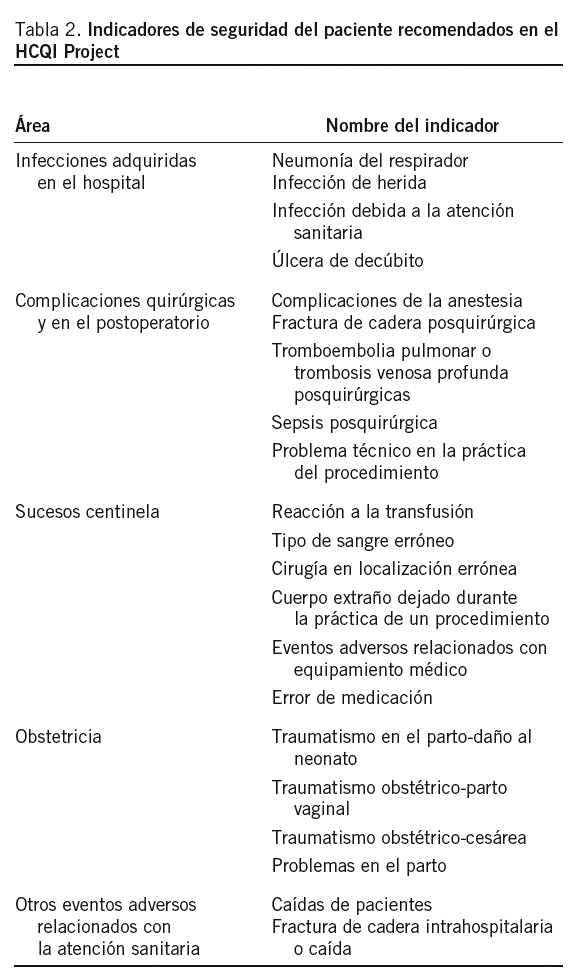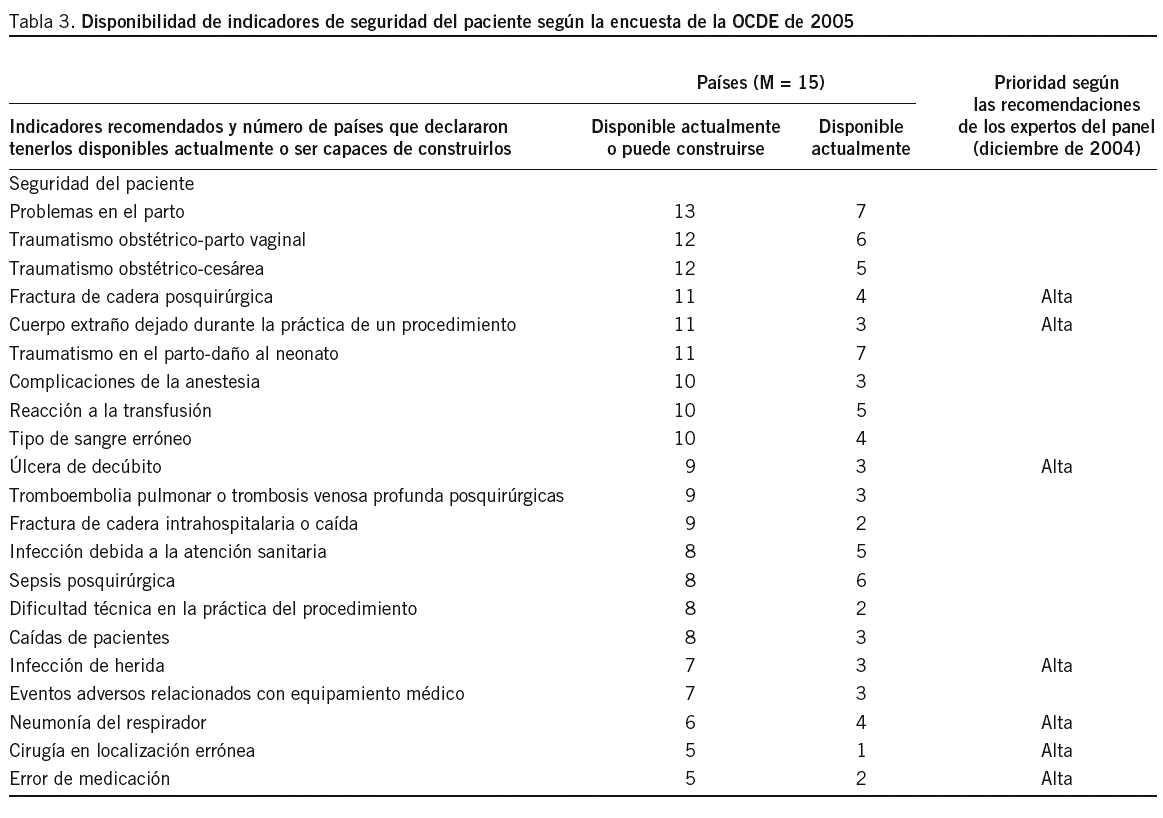Journal Information
Vol. 22. Issue 6.
Pages 327-335 (November 2007)
Vol. 22. Issue 6.
Pages 327-335 (November 2007)
Full text access
Claves y retos en la comparación internacional de la seguridad del paciente: la experiencia del Health Care Quality Indicators Project de la OCDE
Key challenges in comparing patient safety across countries: the experience of the OECD health care quality indicators project
Visits
3866
a División de Salud. Organización para la Cooperación y el Desarrollo Económico. París. Francia.
b AHRQ USA Health Department. Washington. Estados Unidos.
c División de Salud. Organización para la Cooperación y el Desarrollo Económico. París. Francia. Universidad de Amsterdam. Amsterdam. Países Bajos.
This item has received
Article information
Este artículo ofrece un compendio del trabajo del Health Care Quality Indicators Project de la OCDE en el campo de los indicadores de la seguridad del paciente. Además de aportar la lógica de la perspectiva internacional en el ejercicio de comparar indicadores internacionalmente, ofrece un análisis de la situación de los sistemas nacionales de información relacionados con la seguridad del paciente en los países industrializados y un esquema de la estrategia a seguir para mejorar tanto la comparabilidad como la disponibilidad de los datos en los ámbitos nacional e internacional. Esta estrategia gira en torno a tres ejes: a) la introducción de la seguridad del paciente en la agenda política nacional; b) el desarrollo de los sistemas de registro nacional de datos para aumentar la calidad y la disponibilidad de los datos y mejorar su comparabilidad internacional, y c) el establecimiento de un vínculo visible entre información y acción.
Palabras clave:
Seguridad del paciente
Calidad asistencial
Indicadores
Comparación internacional
This article reviews the work of the Organization for Economic Cooperation and Development (OECD) Healthcare Quality Indicators Project in the field of patient safety indicators. The article reflects on the logic for international comparison of patient safety indicators in addition to offering an analysis of the state of the national information systems linked to the measurement of patient safety across industrialized countries. To finish, a strategy to improve the comparability and availability of data both nationally and internationally is outlined. This strategy has a three-pronged approach: a) introduction of patient safety in the national agenda; b) development and expansion of national information systems and registries to improve both the quality and availability of data and enhance comparability across countries; c) establishment of a clear link between information and action.
Keywords:
Patient safety
Health care quality
Indicators
International comparison
Full text is only aviable in PDF
Bibliografía
[1]
OECD Health Care Quality Indicators Project Initial Indicators Report. OECD Health Working Paper no. 22. Paris: OECD; 2006 [citado 13 Jul 2007]. Disponible en: www.oecd.org/health/hcqi
[2]
OECD Health Care Quality Indicators Project OECD 2006 data collection update report on indicators. Health Working Paper no. 29. Paris: OECD; 2007 [citado 13 Jul 2007]. Disponible en: www.oecd.org/health/hcqi
[3]
The OECD Health Care Quality Indicators Project. Int J Qual Health Care. 2006;18 Suppl I.
[4]
Selecting Indicators for the Quality of Cardiac Care at the Health Systems Level in OECD Countries. OECD Technical Working Paper no. 14. Paris: OECD; 2004 [citado 13 Jul 2007]. Disponible en: www.oecd.org/health/hcqi
[5]
Selecting indicators for the quality of diabetes care at the health systems level in OECD countries. OECD Technical Working Paper no. 15. Paris: OECD; 2004 [citado 13 Jul 2007]. Disponible en: www.oecd.org/health/hcqi
[6]
Selecting Indicators for the Quality of Health Promotion, Prevention and Primary Care at the Health Systems Level in OECD Countries. OECD Technical Working Paper no. 16. Paris: OECD; 2004 [citado 13 Jul 2007]. Disponible en: www.oecd.org/health/hcqi
[7]
Selecting Indicators for the Quality of Mental Health Care at the Health Systems Level in OECD Countries. OECD Technical Working Paper no. 17. Paris: OECD; 2004 [citado 13 Jul 2007]. Disponible en: www.oecd.org/health/hcqi
[8]
Selecting Indicators for Patient Safety at the Health Systems Level in OECD Countries. OECD Technical Working Paper no. 18. Paris: OECD; 2004 [citado 13 Jul 2007]. Disponible en: www.oecd.org/health/hcqi
[9]
Leape LL..
Reporting of adverse events..
N Engl J Med, 347 (2002), pp. 1633-8
[10]
Crossing the Quality Chasm: A New Health System for the 21st Century. Washington: National Academy Press; 2001.
[11]
Runciman WB, Sellen A, Webb RK, Williamson JA, Currie M, Morgan C, et al..
The Australian Incident Monitoring Study. Errors, incidents and accidents in anaesthetic practice..
Anaesth Intens Care, 21 (1993), pp. 506-19
[12]
Wilson RM, Runciman WB, Gibberd RW, Harrison BT, Hamilton JD..
The quality in Australian Health-Care Study..
Med J Aus, 163 (1995), pp. 458-71
[13]
Zhan C, Arispe I, Kelley E, Ding T, Burt C, Shinogle J, et al..
Ambulatory care visits for treating adverse drug events in the United States 1995-2001..
J Qual Patient Safety, 31 (2005), pp. 7
[14]
Thomas AN, Pilkington CE, Greer R..
Critical incident reporting in UK intensive care units: a postal survey..
J Eval Clin Pract, 9 (2003), pp. 59-68
[15]
Informe Estudio Nacional sobre los Efectos Adversos ligados a la Hospitalización ENEAS 2005. Madrid: Ministerio de Sanidad y Consumo; 2006 [citado 13 Jul 2007]. Disponible en: http://www.msc.es/ organizacion/sns/planCalidadSNS










